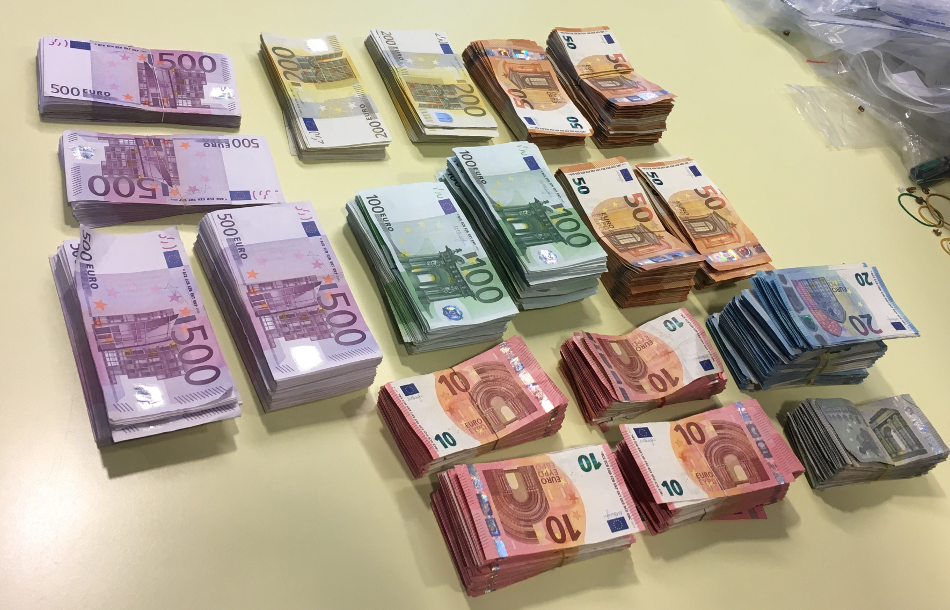12 Stats About Order High-Quality Counterfeit Money To Make You Think Twice About The Water Cooler
The Intricacies of Counterfeit Currency: Understanding Quality and Legal Implications While the term “counterfeit money” frequently conjures pictures of criminal activity and dubious transactions, the truth is that the production and distribution of counterfeit currency encompass a variety of inspirations and repercussions that can be as complex as they are prohibited. The development of digital resources and innovations has actually made conversations on counterfeit money more common, leading people to explore various aspects of this underground world. Comprehending the nuances of premium counterfeit money, and the prospective ramifications of engaging with it, is crucial for anyone interested in the subject. Specifying Counterfeit Currency Counterfeit currency refers to costs or coins produced with the intent to deceive, developed to imitate legitimate currency issued by a government or reserve bank. Quality is often examined based upon several aspects, including: Products Used: High-quality counterfeit notes might utilize similar paper, ink, and security functions discovered in genuine currency. hochwertige fälschungen and Design: A concentrate on replicating great details, such as watermarks or holograms, is vital for developing credible counterfeits. Printing Techniques: Sophisticated techniques, often employing commercial-grade printing devices, enable the production of convincing reproductions. The Economics of Counterfeiting The factors people or groups take part in counterfeiting can be differed, but often consist of the following factors: Earnings Motive: Counterfeiters often operate in the shadows to maximize their earnings through the circulation of fake currency. Ease of access: The accessibility of innovative printing technologies has made it simpler for counterfeiters to produce high-quality notes. Demand: The undercurrent of need for counterfeit money exists due to the bargaining power it might pay for to some people or companies. However, taking part in the production or circulation of counterfeit currency is illegal, with severe legal consequences. Legal Implications Diving into the world of counterfeit money brings with it serious legal repercussions, consisting of: Crook Charges: In numerous jurisdictions, producing or distributing counterfeit currency is a felony. Convictions might cause lengthy jail sentences and significant fines. Civil Liability: Beyond criminal charges, people may discover themselves dealing with civil lawsuits from those damaged by the circulation of counterfeit notes. Authorities Investigation: Engaging with counterfeit currency often attracts the attention of law enforcement companies, causing examinations and prospective arrests. This legal framework highlights that the allure of counterfeit currency is laden with risk. The Quality Factor: What to Look For High-quality counterfeit currency can be hard to distinguish from the real thing, specifically as technology continues to advance. Here are some key indicators that individuals often search for when assessing the quality of counterfeit notes (although one must bear in mind that ownership or circulation of counterfeit currency is prohibited):. Paper Quality: Genuine currency uses a specific type of paper which contains a particular ratio of cotton and linen, making it more resilient than routine paper. Color Shifting Ink: Many legitimate banknotes include color-shifting ink that alters color when viewed from various angles. High-quality counterfeits might reproduce this function, though badly. Watermarks: Most currencies consist of watermarks that are visible when held up to light. Counterfeit reproductions may fall short in imitating this hallmark. Security Threads: Genuine currency has actually embedded security threads that can be discovered by touch; quality counterfeits may not reproduce this feature accurately. Microprinting: The usage of microprinting (little text that appears blurred to the naked eye) is another typically improperly reproduced feature. The Risks of Counterfeiting. Engaging with counterfeit money goes beyond legal ramifications; there are significant risks included, including:. Financial Loss: Even if one effectively obtains counterfeit currency, there is always the risk of getting caught, leading to financial loss alongside legal concerns. Social Consequences: Being included in illegal activities can tarnish one's reputation and relationships, both individual and professional. Increased Law Enforcement Scrutiny: Buying or offering counterfeit money ignites the interest of law enforcement, potentially causing investigations that put people at higher risk. Frequently asked questions. 1. Is it illegal to own counterfeit money? Yes, having counterfeit money is unlawful, and individuals may face criminal charges for merely holding or attempting to utilize such currency. 2. What should I do if I accidentally receive counterfeit currency? If you think that you have actually received counterfeit money, do not attempt to invest it. Instead, report the event to your local authorities or the banks where you received the counterfeit note. 3. Are there legitimate uses for counterfeit currency? No. There are no legitimate uses for counterfeit currency. Nevertheless, some individuals might develop props for academic, creative, or movie functions and can obtain unique consent for this under particular laws. 4. How can legal falschgeld kaufen protect myself from counterfeit currency? Stay Informed: Familiarize yourself with the functions of genuine currency. Use Anti-Counterfeit Tools: Tools such as UV light detectors can assist determine counterfeit notes.  Be Cautious in Transactions: Be cautious of accepting money in scenarios that feel doubtful, and make transactions in trustworthy environments. Conclusion. euro falschgeld kaufen of counterfeit currency is swarming with risk, legal effects, and ethical issues. While the appeal of top quality counterfeit notes might be appealing to some, it is essential to remember the legal and social effects that accompany involvement in such activities. Instead of navigating the dirty waters of counterfeit money, individuals are encouraged to look for genuine opportunities for financial transactions, focusing on stability and legality in their economic pursuits.
Be Cautious in Transactions: Be cautious of accepting money in scenarios that feel doubtful, and make transactions in trustworthy environments. Conclusion. euro falschgeld kaufen of counterfeit currency is swarming with risk, legal effects, and ethical issues. While the appeal of top quality counterfeit notes might be appealing to some, it is essential to remember the legal and social effects that accompany involvement in such activities. Instead of navigating the dirty waters of counterfeit money, individuals are encouraged to look for genuine opportunities for financial transactions, focusing on stability and legality in their economic pursuits.